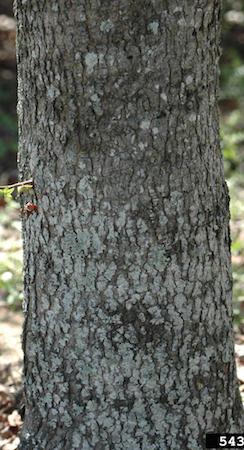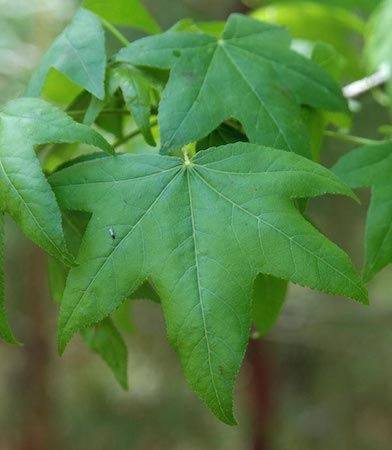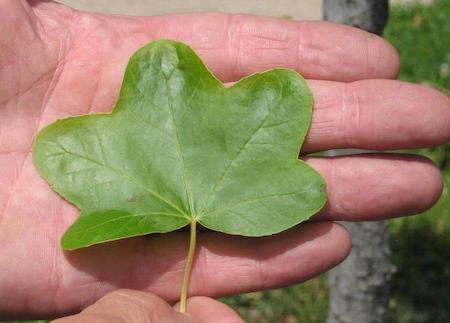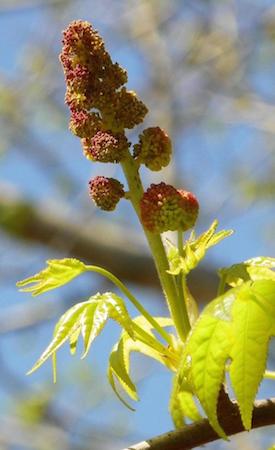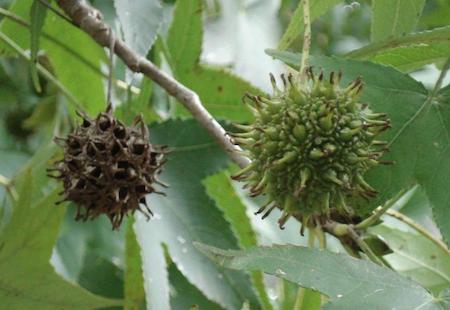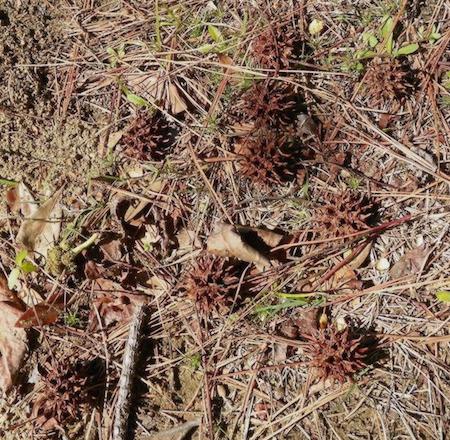Sweetgum
Specifications
- Latin (scientific) name: Liquidamber stryraciflua. Liquidamber is from the Spanish common name in Mexico, which refers to the fragrant resin.
- Life expectancy: 150 years
- Height: 138 feet
- Circumference: 11 feet
-
The height and circumference measurements listed here are for the largest-known sweetgum tree in Atlanta. This tree is located in the park across from 452 West Parkwood.
-
Special characteristics:
This is a handsome hardwood which is often mistaken for a maple until the seeds form on it. The seeds are the notoriously spiny gum balls, well known as ornaments for Christmas trees (spray with color and hang), mean little projectiles when thrown at someone, or broken bones when people slip on them and fall.
-
Annoyance factors:
The biggest annoyance factors are the sweetgum balls. They are from 1 to 1-1/2 inches in diameter with spines about a quarter of an inch long. They look like little land mines, and can be just as devastating if you accidentally step on one. People with sweetgum trees should seriously consider removal or constant vigilance with a powerful blower to keep the gumballs blown off areas where people walk.
Every few years, sweetgum trees have a heavy bearing season of gum balls. Then a different kind of problem can arise: branch breakage. Sweetgum trees shed large green branches when they get to their full size. Why? Already the wood is very brittle. Then, every few years in late summer, they produce a bumper crop of gum balls, which add enormous weight to the branches. Add a little rain water to weigh down the leaves even more, and POW!! Down comes a whopper branch sometimes more than 30 feet long. The branch can weigh hundreds of pounds, and will weigh many thousands more with velocity by the time it hits ground. This is "sweetgum terrorism," because this event can happen any time. And, there is no way to tell which branch is going to break. It's very unnerving.
-
Fun Facts:
The name “liquidamber” comes from the gummy substance which was once popular for making chewing gum.
Sweetgum is a valuable commercial hardwood second only to oak used in furniture and veneer. It takes a high polish and is often re-sold to Americans (after being exported overseas) as “Circassion Walnut,” a fancy name for a common American wood.
Leaves become rounded with age.
-
Photo Credits:
Bark: Karan A. Rawlins, University of Georgia, Bugwood.org
Leaves1: Chris Evans, Illinois Wildlife Action Plan, Bugwood.org
Leaf2 (mature tree): International Society of Arboriculture, Bugwood.org
Flowers: Karan A. Rawlins, University of Georgia, Bugwood.org
Gumballs on the tree: Franklin Bonner, USFS (ret.), Bugwood.org
Gumballs on the ground: Karan A. Rawlins, University of Georgia, Bugwood.org

